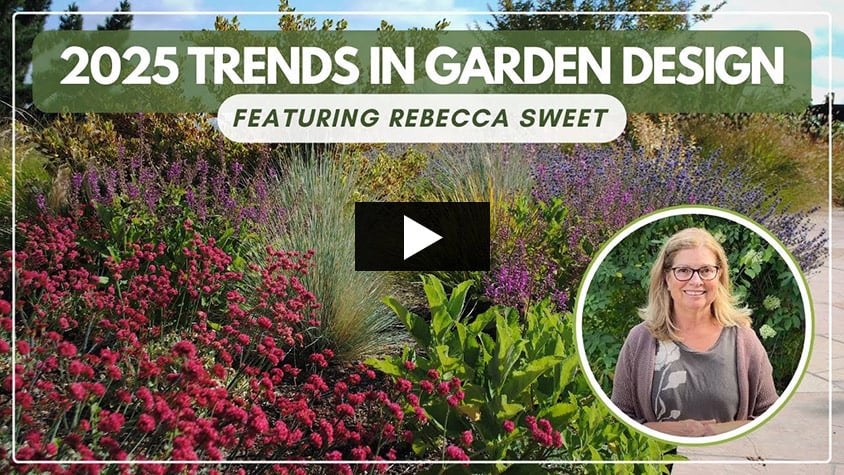2025 Trends in Garden Design
We share 10 gardening trends on the rise in 2025Gardeners are adapting to the challenges of a changing world by embracing new approaches to gardening: traditional methods are being updated, along with a fresh perspective on the role of gardens in daily life. Prioritizing the needs of wildlife and implementing sustainable practices that nurture local ecosystems (and ourselves!) are all coming together to create deeply personal and more environmentally friendly gardens that are a true joy to behold.
Check out the video "2025 Trends in Garden Design," with Rebecca Sweet, Denise Kelly, and Jim Peterson, where they dig deeper into each of these 10 trends coming your way in 2025.
1. The Rise of Native Plants and 'Nativars': Meeting the Demand for Eco-Friendly Gardens
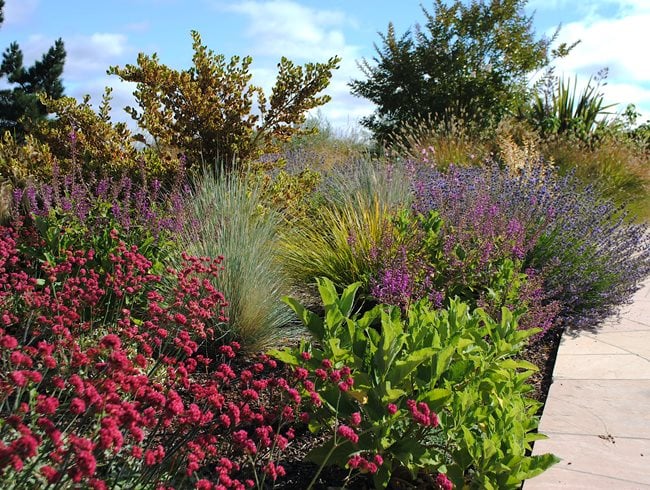
The vibrant, colorful blooms of red buckwheat (Eriogonum grande rubescens) are a perfect example of a low-water native perennial that thrives beautifully in traditional perennial borders. The Macomber Garden. Design and photo by: Rebecca Sweet.
The demand for native plants is skyrocketing as more gardeners recognize their many benefits.
“From the industry perspective, native plants and the conversation about the utility of native plants continues to be a hot topic. We probably get the most requests from our customers for literature, messaging, and information on this topic.” — Andrew Jager, Marketing Manager for Walters Gardens (Proven Winners Perennials)
To meet this demand, breeders and growers are offering a wider variety of natives, including 'nativars,' which are cultivated native plants specifically designed to thrive and fit into residential gardens. While native plants are typically defined as growing in nature without human intervention, 'nativars' are created by selecting and crossing native plant seedlings to produce desired traits such as compact size or brighter colored flowers. In many cases, they provide food and habitat for pollinators and wildlife, just like their wild counterparts, but with the added benefit of being more adaptable to home gardens—thus attracting more home gardeners to use them.
“The interest in native plants continues to surge, and our plant breeding program for natives has for years focused more on new sizes and habits for native species that make them easier to use in residential settings. This is different than what most people think a plant breeding program does, as they assume it’s about new flower colors and shapes." — Stacey Hirvela, Proven Winners ColorChoice Shrubs and the Gardening Simplified podcast.
- Learn more about how and why to grow a native plant garden.
- Discover more about native cultivars (nativars).
2. Redefining Perfection: Finding Harmony in a Less Tidy Garden
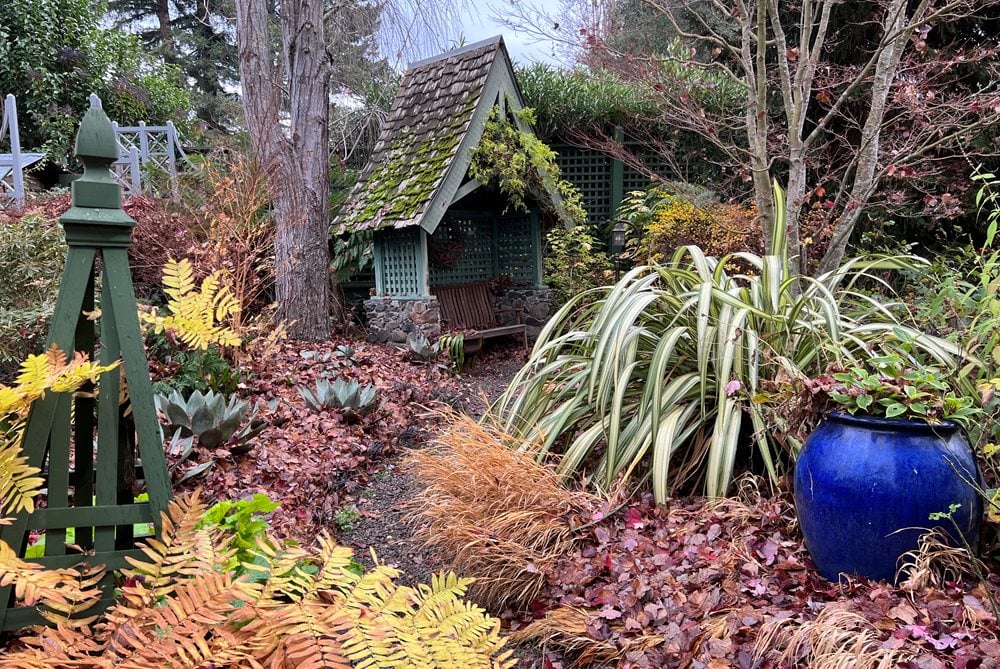
In Freeland and Sabrina Tanner’s autumn garden, fallen leaves and fading perennials are intentionally left in place to provide shelter for burrowing insects while offering a unique perspective on the quiet, fading beauty of the fall landscape. Photo by: Sabrina Tanner. See more of the Tanner Garden.
In response to the rapidly dwindling insect and bird population crisis, gardeners are re-defining what it means to have a harmonious garden. Nature is encouraged to thrive in our gardens which means, in part, adopting a more relaxed and organic gardening style. Perfection is being re-defined as we don’t rush to tidy up fading perennials, remove seed heads, or rake up every leaf in the garden.
“I feel like people are more willing to accept the aesthetics that may be a little less tidy looking. There are still those who are looking for the perfect lawn and not a leaf out of place, but they are fewer and farther in between. Most people have decided that, if there's lawn, there can be some clover and that's ok. And, thanks to public gardens like the Lurie Garden and the Highline, people are starting to see the beauty in all phases of a perennial's life. Our aesthetic lens has evolved, and now, more of us are able to appreciate this different kind of beauty." — Megan Wade, Founder of Fieldwork Design Group
3. The New Look of Low-Water Landscapes
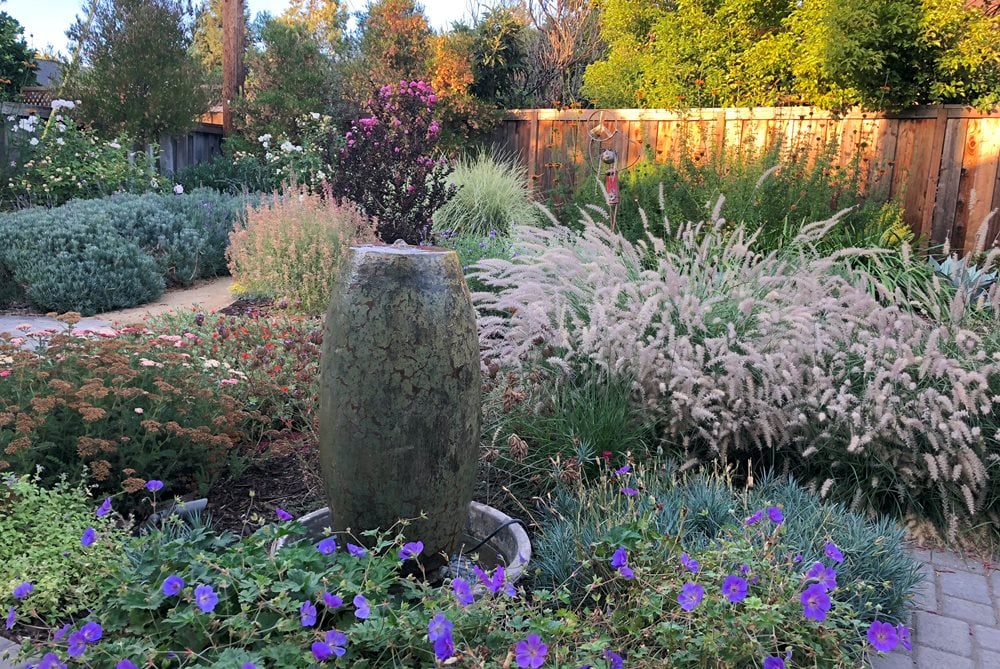
Lush, low-water plants have transformed this suburban garden into a vibrant paradise brimming with colorful blooms, contrasting textures, and heavenly fragrance. This refreshing update enhances the garden's visual appeal and supports sustainable gardening practices, making it a welcoming spot for residents and pollinators alike. Designed by Susan Morrison. Photo by: Rebecca Sweet.
While cacti and succulents are great for low-water gardens, the options don’t stop there! Many drought-tolerant plants offer lush, leafy foliage and vibrant blooms, making them ideal choices for those wanting to reduce water usage in their gardens.
“Replacing lawn with low-water plants in drought-prone areas is not a new idea. What is new is that designers and gardeners are moving beyond succulents and rock gardens and recognizing that any garden style can be reinterpreted with a lower-water palette. My clients are excited to learn they can have the flower-filled cottage garden they crave while still using water responsibly. Incorporate shrubs like grevillea and blue hibiscus, and perennials like yarrow, catmint, and kangaroo paw for a long season of colorful blooms.” — Susan Morrison, landscape designer with Creative Exteriors Landscape Design.
Exploring new possibilities in drought-tolerant landscaping allows gardeners to create lush, diverse environments that thrive with minimal water, blending beauty with sustainability.
4. Fire-Resistant Gardening
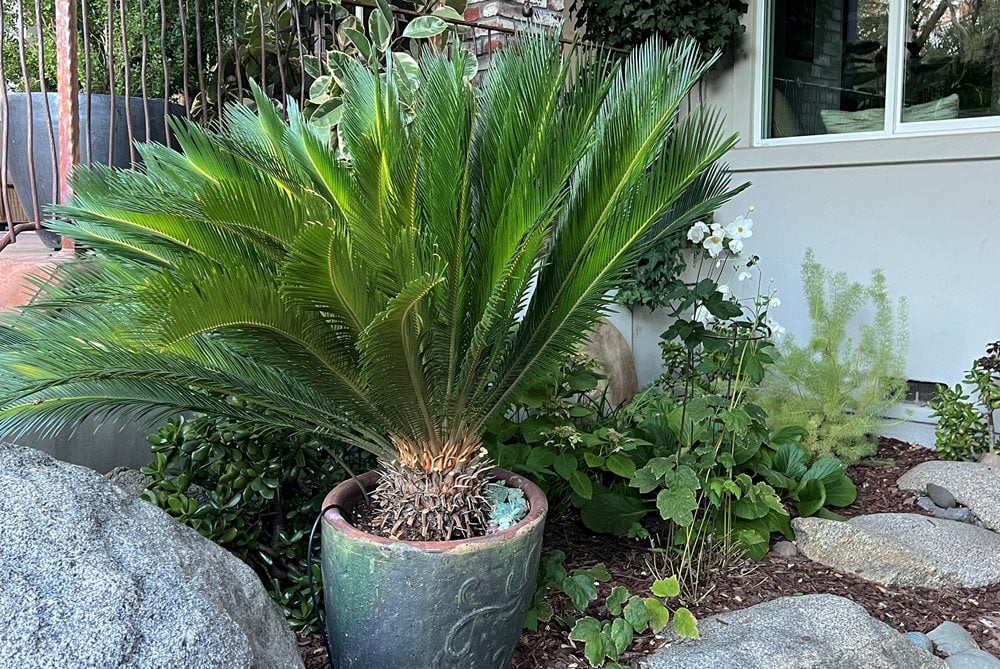
The Sago palm (Cycas revoluta) is not only visually striking with its bold, feathery fronds, but its leathery, thick foliage makes it a hardy, fire-adaptive plant that can play a crucial role in creating defensible space around homes. Photo by: Rebecca Sweet.
Due to the rise in extreme weather conditions, fire-resistant gardening is becoming increasingly popular not only in fire-prone areas of the West Coast but also across the country. Gardeners are focusing on creating gardens that are not only beautiful and environmentally friendly but also more resilient in the face of wildfires, or at the very least, will not exacerbate a wildfire.
“I know this isn’t new to the West, but here in the Midwest, I’m beginning to hear more about fire-resistant plants and what makes a good, fire-resistant perennial. Perhaps going hand-in-hand with concerns about fire resistance is an ongoing desire for plants with good heat and drought tolerance.” — Andrew Jager, Walters Gardens (Proven Winners Perennials)
5. Creating More Living Spaces for People and Wildlife
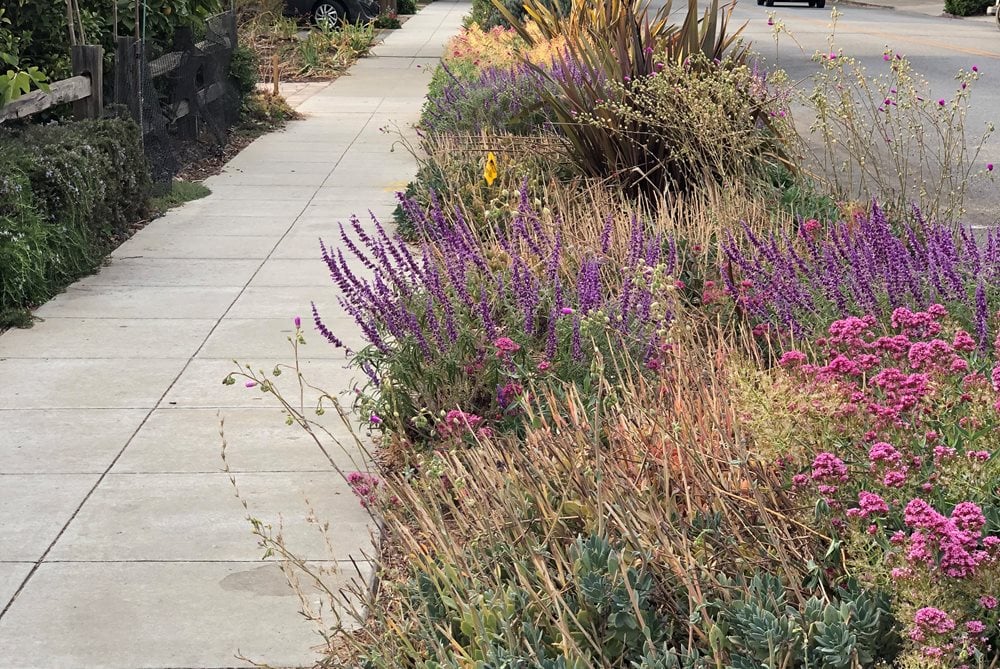
What was once a parking strip of ankle-twisting cobblestones and a water-thirsty lawn is now a vibrant, low-water garden alive with colorful blooms and fluttering butterflies. Photo by: Rebecca Sweet.
Expanding outdoor living spaces for both people and wildlife is becoming increasingly popular. Homeowners are rethinking traditional lawns and transforming often overlooked spaces—such as parking strips, rooftops, and unused driveways—into areas filled with native plants, pollinator gardens, and outdoor living spaces.
“In Chicago's northside neighborhoods, there is an increase in parkway gardens. The requests I see from clients is to reduce lawn and to increase the area they can plant perennials in, both for pleasure and to help create habitat for pollinators. There's an increase in both parkways with a complex of perennials, as well as lawn alternatives such as liriope and groundcovers.” — Megan Wade, Fieldwork Design Group
Get inspired to extend your garden space with these gorgeous gardens:
- Sidewalk Garden: A Perennial Parkway in Chicago
- A Small-Space Rooftop Flower Garden in Chicago
- Urban Rooftop Garden in Portland
6. Turning to Resilient Plants to Manage Environmental Stressors

Boxleaf euonymus (Euonymus japonicus 'Microphyllus') is an excellent substitute for disease-prone boxwood in this reimagined parterre garden, offering a fresh take on classic borders. The Miller garden. Design and photo by Rebecca Sweet.
Selecting resilient plants is essential when gardening in areas with harsh environmental conditions. These plants are well-adapted to withstand stressors like pollution, climate change, and diseases, allowing them to thrive where other species struggle to survive. Boxwood is a classic example, with the dreaded boxwood blight fungus quickly destroying vast areas of established plants.
‘Everyone loves the classic look of boxwood, and it’s such a fantastic problem-solving plant. But it’s not without problems—winter damage in cold climates, the odor of many varieties, and pests and diseases, both new (boxwood blight, box tree moth) and old (psyllid, leaf miner, spider mites, etc.). So, there is tremendous interest in evergreen shrubs that serve a similar aesthetic role in the garden but without the liabilities. This could mean plants like inkberry holly, new genera like Pyracomeles, and even rethinking old favorites like gardenia as potential replacements." — Stacey Hirvela, Proven Winners ColorChoice Shrubs
Other plant selections that are known for their resilience to environmental stresses include Ginkgo (Ginkgo biloba), redbud (Cercis), honeylocust (Gleditsia triacanthos) or silver maple (Acer saccharinum) trees; many grasses, including switchgrass (Panicum virgatum), and perennials such as yarrow (Achillea millefolium), catmint (Nepeta) or coneflowers (Echinacea).
7. Focus on Mental Well-Being in the Garden
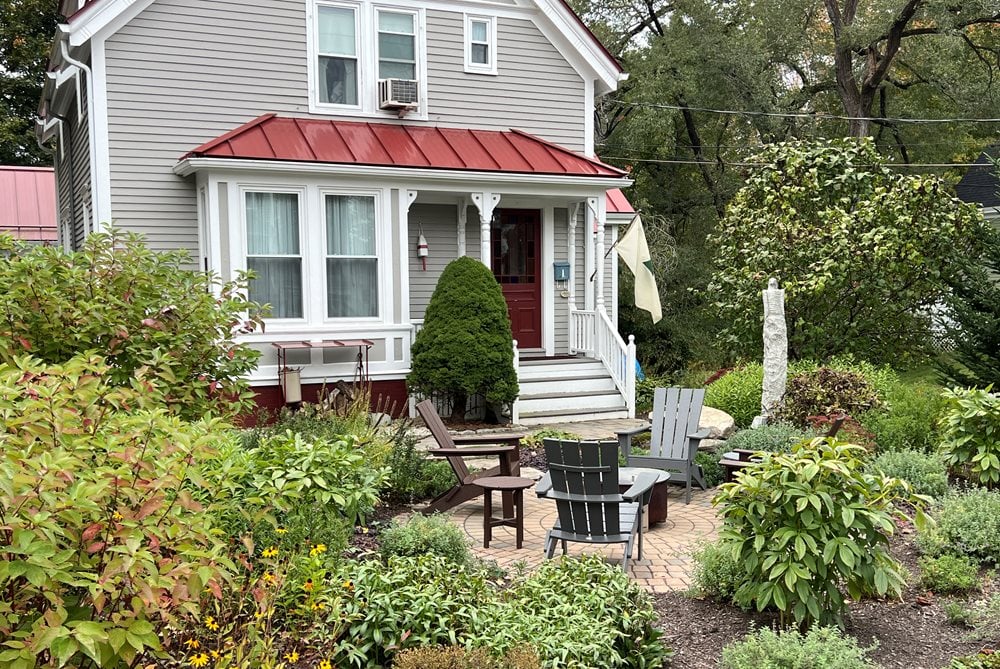
A front garden firepit, paired with cozy seating and surrounded by a relaxed, informal garden, offers the perfect spot to unwind with family and friends. Photo by: Rebecca Sweet.
Given the increasing challenges of gardening (as shown by the above trends!), there's a growing trend to create intimate, quiet spaces within the garden that offer peace and purpose while cultivating mental well-being. Gardens are being designed with relaxation in mind, incorporating spaces for meditation, reading, or intimate areas for gathering with loved ones. These tranquil spaces serve as sanctuaries where gardeners can recharge, blending the therapeutic power of nature with personal well-being.
Explore these inspiring stories and get tips on creating your own peaceful garden spaces:
- The Healing Power of Gardening: A Missouri Woman's Journey
- An Everchanging Therapy Garden
- Create a Peaceful Garden That Promotes Relaxation
8. A Nod to Nostalgia
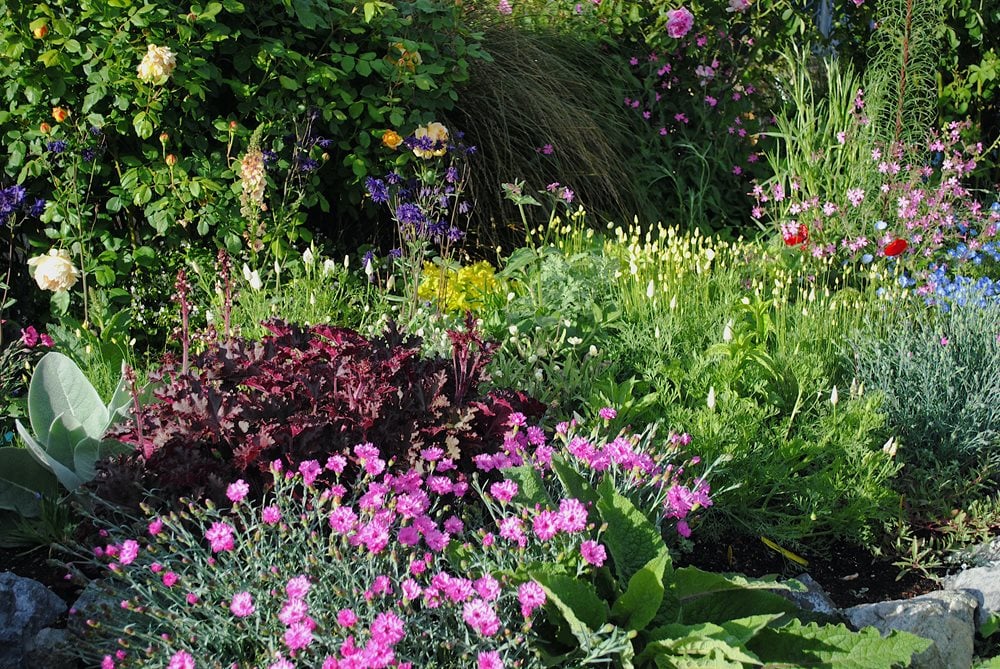
This delightful, lush garden bed embodies the charm of a cottage garden, bursting with vibrant colors from beloved classics like cottage pinks (Dianthus), roses, and poppies. Photo by: Rebecca Sweet.
There's a noticeable increase in requests for nostalgic touches in the garden to bring a sense of comfort and familiarity. Elements such as oversized dramatic blooms, relaxed color schemes, or techniques such as diagonal brick edging all give a nod to gardens past.
With their informal charm, cottage-style gardens are also resurging, evoking cherished memories while bringing a sense of unbridled joy, peace, and continuity. And while it's always fun to try the latest and greatest plant introduction, gardeners are looking to add plants that remind them of their mother or grandmother's garden (often including classics like peonies, bearded iris, and hydrangeas.)
For a touch of nostalgia and timeless beauty, here are some insights and plant ideas to help you bring the charm of cottage-style gardens into your own space:
- 20+ Favorite Cottage Garden Plants
- Lessons Learned While Creating a Contemporary Cottage Garden
- VIDEO: Gardening Simplified — Garden Nostalgia
9. Portable Plants: Gardening While Renting
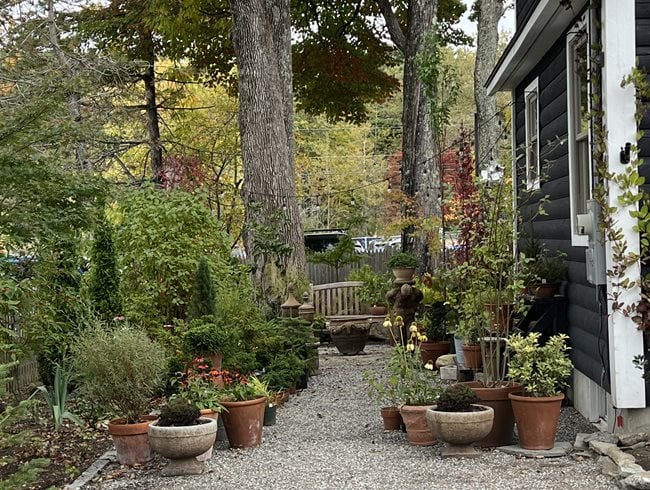
Lush and vibrant container groupings perfectly transform a sparse parking strip into a flourishing garden. Consider incorporating a few evergreen shrubs with colorful foliage or fragrant blooms to evoke the feel of a traditional garden bed. Combine these with fresh herbs and seasonal, annual containers to create a lush and inviting garden filled with life, scent, and color. Photo by: Rebecca Sweet.
If you're a renter who loves to garden, container gardening is a fantastic solution for bringing nature into your space. Containers are affordable, adaptable, and easy to relocate, allowing renters to embrace the joys of gardening while navigating the unique challenges of rental living. Whether it's a small balcony, a sunny windowsill, or a shared courtyard, with a little imagination and a few pots, you can create your own vibrant oasis no matter where you call home.
Make the most of small spaces with creative container gardening ideas perfect for renters looking to add a touch of green to any setting:
- How to Create the Perfect Balcony Garden
- Best Container Plants for Full Sun
- Container Plants Made for the Shade
- Container Garden Recipes
10. Grow Your Garden Knowledge: Exciting Gardening Education Opportunities
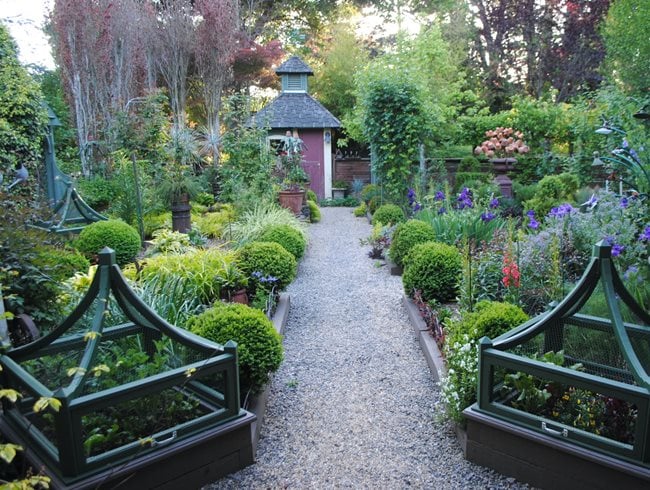
This charm- and art-filled vegetable garden is just one of the spaces studied in Freeland & Sabrina's Garden Experience, a two-day in-person learning event. The vibrant colors, unique plant combinations, and distinctive artwork sprinkled throughout the garden explore the connection between art and nature. This immersive experience is designed to spark imagination and cultivate a deeper appreciation for the beauty of our gardens. Photo by: Rebecca Sweet.
With the rise of virtual technology and online education, gardeners can now connect with world-class designers and fellow gardening enthusiasts from anywhere, with the flexibility to learn at their own pace. Still, many are also enjoying a return to in-person events, which offer immersive, hands-on learning and the chance to experience gardens firsthand. Both options provide unique ways to grow and connect, bringing a sense of inspiration and shared passion for gardening.
Explore these expert-led opportunities to transform your garden into your own personal retreat:
- Garden Design Webinars: Take your garden to the next level with expert tips and inspiring ideas.
2025 Trends in Garden Design
BOOK REBECCA AS YOUR NEXT GARDEN SPEAKER!
Fun, passionate, and knowledgeable, three words that describe Rebecca Sweet! See what discussion topics are available and watch a short video as Rebecca explains how her talks will inspire, entertain, and educate gardeners at all skill levels.
RELATED:
Landscape Design: Expert Tips, Styles & Planning Advice
2024 Garden Trends
